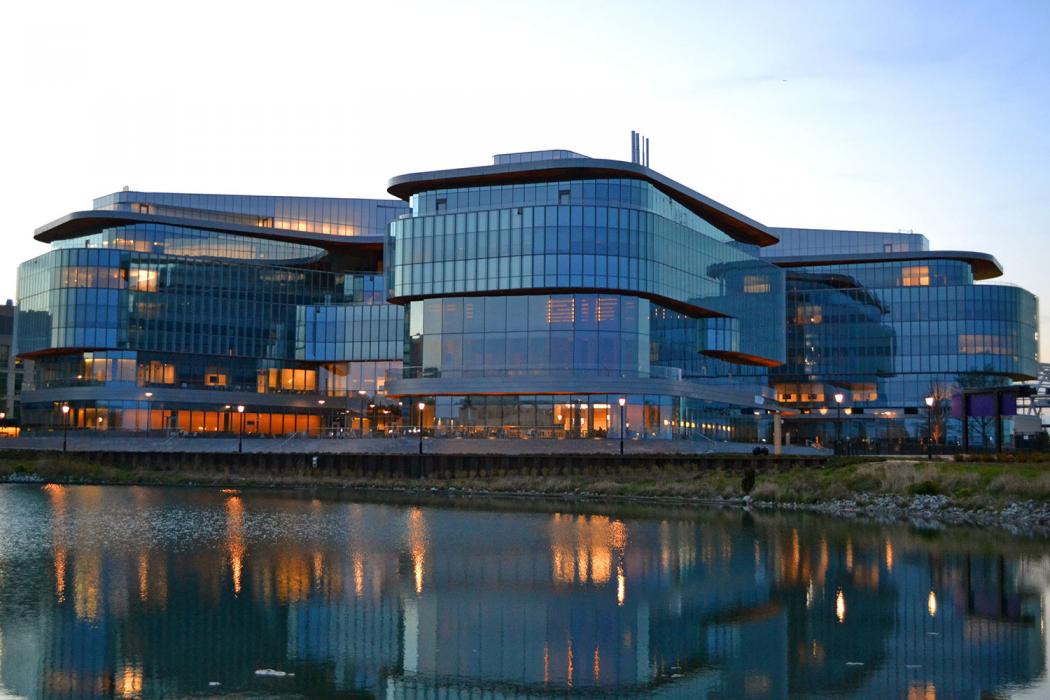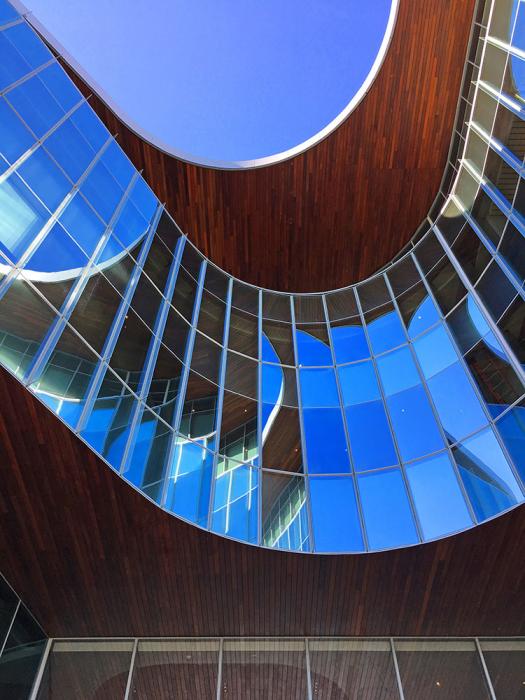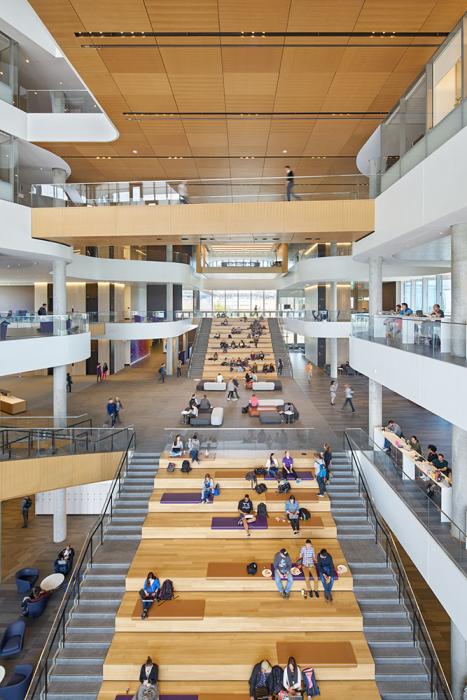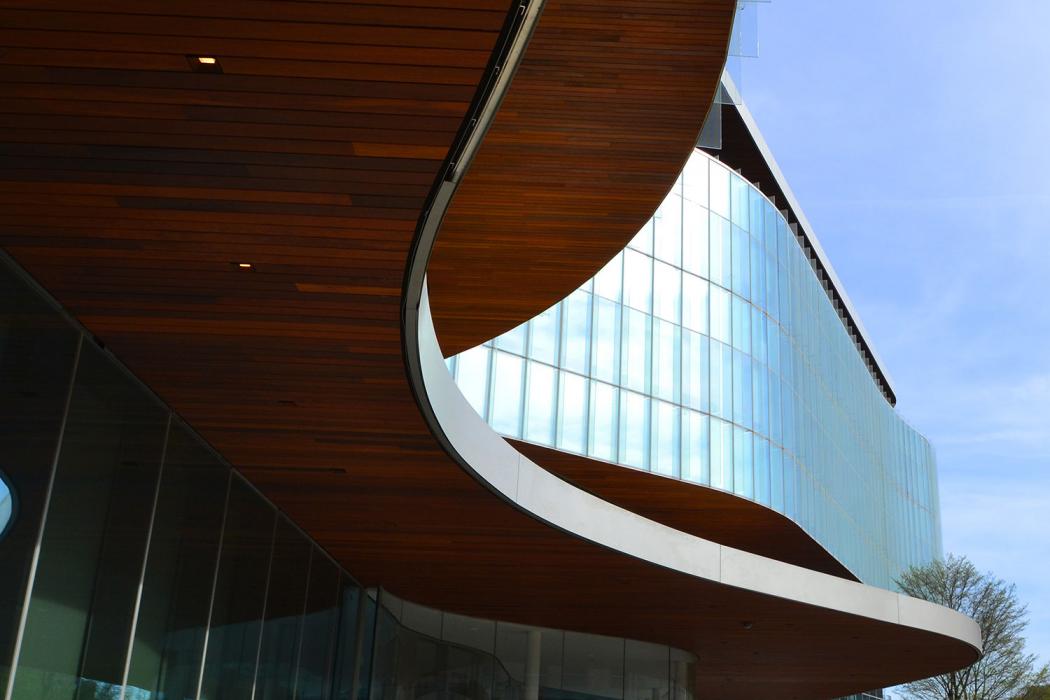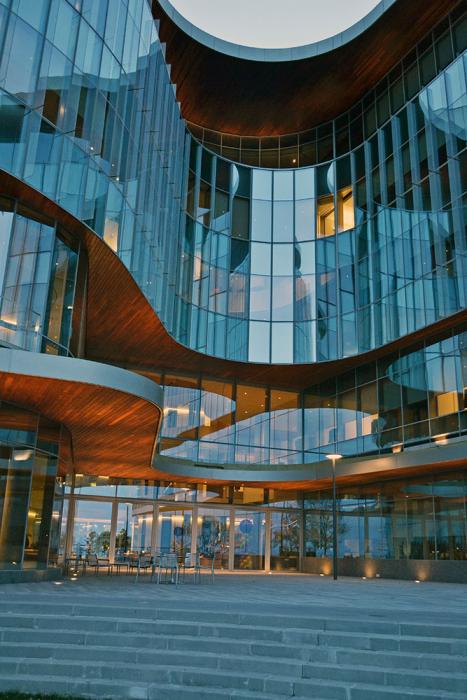The Global Hub, Kellogg School of Management
The Global Hub, the new home of the Kellogg School of Management at Northwestern University. consists of four six-story concrete “lofts” positioned around two vertically stacked central atriums.
Overview
The Global Hub, the new home of the Kellogg School of Management at Northwestern University. consists of four six-story concrete “lofts” positioned around two vertically stacked central atriums. The ground floor features a three-story atrium, known as the Collaboration Plaza, surrounded by a network of pedestrian bridges, cantilevered balconies, monumental stairways, and is accented by a “floating” collaboration room at the top of the space. Directly above the plaza is another two-story atrium known as the Faculty Summit, which also has interconnecting monumental stairs and flanking seminar rooms.
Additional features of the Global Hub include large, column-free flexible classrooms, the two-story White Auditorium, light courts at each loft, extensive exterior cantilevered terraces and canopies and a fitness center. A structural steel penthouse sits atop each loft, contains mechanical and HVAC equipment, and forms the roof of the Faculty Summit.
We provided both structural design and façade engineering services to KPMB Architects for the 415,000-square-foot building, which opened in 2017.
Highlights
- We addressed design challenges without sacrificing budget or architectural intent. Amid numerous structural challenges, the dissimilar column grids of the lower-floor classrooms and upper-floor offices presented the opportunity for a unique structural solution. A hidden network of post-tensioned concrete beams was developed to support the 169 transfer columns needed to realize the dramatic setbacks and overhangs prominent throughout the building.
- The five sets of monumental stairs required sophisticated analysis and structural steel solutions. Creative and technical solutions assured openness while adhering to structural considerations of stability and acceptable vibration limits.
- The complex nature of the building’s geometry necessitated special attention to structural performance for occupant comfort. The architectural vision was achieved by the fusion of concrete and steel framing solutions – a marriage requiring careful planning of connection details and material compatibility.
- To create the signature lofts and harbors, the façade team identified various strategies for curved enclosures. Ultimately, the design team opted for a segmented, bespoke unitized curtain wall on the main body of the building. This system includes a glass fin of variable depth, which further accentuates the building’s form.
- The auditorium space in the southeast loft, along with some of the harbor façades, called for tall-span systems. The façade team selected a minimal structural steel supported curtain wall that is both elegant and maintains the high weather performance of traditional curtain wall.
- Other façade systems of note include the metal panel rainscreen system cladding the canopies and the structural glass entry vestibule, where curved glass panels are the self-supporting enclosure wall.
- The building’s exterior features dynamic canopies that accentuate the curves of the structure, specifically at the roof and entryways. Wind tunnel testing generated load data that accurately captured the effects of lakeside winds and irregular geometry on the canopies and wall systems.
I know this was not an easy project and most people will never understand the complexities since it looks so seamless now. I know that it was hard and frustrating work to get that result. The next terribly complex project, I’ll be calling you!
Our Team



